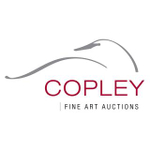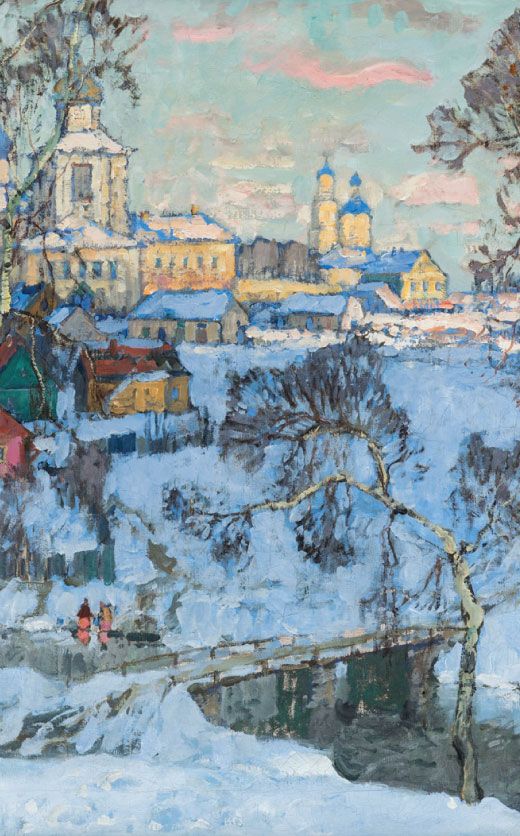The Starr Osgood Merganser Hen by Capt. Charles C. Osgood (1820-1886)
Lot 105
About Seller
Copley Fine Art Auctions
20 Winter Street
Pembroke, MA 02359
United States
Founded in 2005, Copley Fine Art Auctions is a boutique auction house specializing in antique decoys and American, sporting, and wildlife paintings. Over the course of the last two decades, the firm has set auction records for not only individual decoy makers, but also entire carving regions. Copley...Read more
Categories
Estimate:
$75,000 - $125,000
Absentee vs Live bid
Two ways to bid:
- Leave a max absentee bid and the platform will bid on your behalf up to your maximum bid during the live auction.
- Bid live during the auction and your bids will be submitted real-time to the auctioneer.
Bid Increments
| Price | Bid Increment |
|---|---|
| $0 | $50 |
| $1,000 | $100 |
| $2,500 | $250 |
| $5,000 | $500 |
| $10,000 | $1,000 |
| $25,000 | $2,500 |
| $50,000 | $5,000 |
About Auction
By Copley Fine Art Auctions
Jul 10, 2025
Set Reminder
2025-07-10 10:00:00
2025-07-10 10:00:00
America/New_York
Bidsquare
Bidsquare : The Sporting Sale 2025, Day 1
https://www.bidsquare.com/auctions/copley/the-sporting-sale-2025-day-1-19844
Lots 1-316 Copley Fine Art Auctions cinnie@copleyart.com
Lots 1-316 Copley Fine Art Auctions cinnie@copleyart.com
- Lot Description
The Starr Osgood Merganser Hen
Capt. Charles C. Osgood (1820-1886)
Salem, MA, c. 1850
18 1/4 in. long
"...saw many Flocks of Ducks + Coots and 1 flock of geese. The Geese lit in the river. Never leave Decoy out in the river over night, for fear [sic] being carried away by drift stuff. A strong argument this evening on the whole question-decision in the affirmative." - Henry Perkins Ives and Charles C. Osgood, gunning journal entry, Oct. 6, 1861 "The well-known provenance document accompanying the Shelburne Museum's rigmate Osgood geese relates that Charles C. Osgood, a ship's captain from Salem, sailed for California in 1849, and while waiting to return with his cargo, made these decoys. Upon reaching home, he took them to a friend's hunting lodge in nearby Rowley, where they remained until discovered one hundred years later. Rowley, fifteen miles north of Salem, is on the west side of Plum Island Sound.
"The lodge, the Ives Camp, was built in 1853 by its co-owners, Charles Osgood and Henry Perkins Ives. It was on the north bank of the Rowley River, an ideal location, giving hunters access to an enormous salt marsh snaked by a tangle of tidal creeks and rivers.
"For many years there have been rumors of a camp log-and there is one in the Plover House Company records at the Phillips Library of the Peabody Essex Museum. It comes in two versions. The smaller notebook covers 1853-1873. The larger one, a photostat with added entries, spans 1853 to 1897, documenting a total of forty years of shooting. The journal's front page is blank but for the signatures of Osgood and Ives. The "company" consisted of about ten other local gunners. Visitors to the club included the North Shore decoy royalty of Captain Samuel A. Fabens (1814-1899), Fred Nichols (1854-1924), and the artist John Prentiss Benson (1865-1947), the brother of Frank W. Benson (1862-1951).
"Although both Charles Osgood and his older brother, Henry (1818-1892), were born in Baltimore, their parents, Henry and Lydia Bryant Osgood, had deep roots in the bustling seaport of Salem, Massachusetts. When the boys were still small, their father moved the family back north to his hometown. Charles graduated from high school in 1835, and at age fifteen, like many of his classmates, went to sea. When he had attained the rank of captain, he was hired by Colonel Francis Peabody, owner of a fleet of Salem ships.
"Peabody, from an extremely wealthy family, had declined college to pursue his passions for chemistry, mechanical engineering, and invention. He was clearly talented at all three, experimenting in turn with lead, book papers, linseed and whale oils, steam locomotion, and flax. He also designed his Gothic Revival mansion, crafted furniture for the place, and, in addition, made musical instruments.
"Colonel Peabody's fleet served two purposes. First, it brought him natural resources from overseas, then it delivered the resulting products he created to his European clientele. Osgood served as one of his masters for twenty-five years, voyaging to Calcutta, Bombay, and Canton among many other ports.
"Captain Osgood also made a group of red-breasted mergansers which are as elegant and regal as the geese. Half are hollow with bottom boards like the geese, but the others are solid, and the two groups were made from different patterns. The solid birds have lower tails that ride close to the water while the hollow decoys have high backs and hiked tails." - Special thanks to The Museum of American Bird Art, Mass Audubon, and "Massachusetts Masterpieces" curator and author Gwladys (Gigi) Hopkins for providing this biographical content.
Captain Charles Osgood, Lothrop Turner Holmes, and Charles Safford are all Massachusetts masters who share the distinction of having made a limited rigs, with few remaining works known to have survived. Among them, Osgood's works are the most scarce, especially when considering decoys that are held in private hands.
One rig of Osgood geese resides in the Shelburne Museum, and four mergansers are spread among other museums. After counting this hollow hen, only three mergansers are known to remain. Of the private birds, two are solid body hens with low tails, and one is a regal drake. While this hen spent time on loan to the Peabody Essex Museum, it is the only hollow hen known outside of museum walls today.
Over the decades, an all-star lineup of collectors have claimed it; prior to entering the Kirson Collection, it was owned by Dr. George Ross Starr, Ronald J. Gard, and Dr. Lloyd T. Griffith.
Original paint with moderate gunning wear, tight cracks in neck, lower left side, and end of tail. Bottomboard seam slightly lifted on left side.
Provenance: Dr. George Ross Starr Jr. Collection
Ronald J. Gard Collection
Dr. Lloyd T. Griffith Collection
Donald Kirson Collection
Literature: Linda and Gene Kangas, "Decoys," Paducah, KY, 1992, p. 211, exact hen illustrated. Rob Moir and Jackson Parker, "Massachusetts Waterfowl Decoys," The Magazine Antiques, September 1989, p. 518, pl. III, exact decoy illustrated. John Clayton, "Massachusetts Masters: Decoys, Shorebirds, and Decorative Carvings," The Ward Museum of Wildfowl Art, Salisbury University, 2010, pp. 16-17, exact decoy illustrated. George Reiger, "Humble Masterpieces: Decoys," National Geographic, vol. 164, no. 5, November 1983, p. 651, exact decoy illustrated in Starr Collection. Jackson Parker, "The Year in Review: The Decoy at Auction 1998," Decoy Magazine, 1998, front cover and p. 9, exact decoy illustrated. "The Decoy Hunter," Clinton, IN, November/December 1991, p. 15, exact decoy illustrated. Adele Earnest, "The Art of The Decoy: American Bird Carvings," New York, NY, 1965, p. 76, pl. 64, solid-bodied rigmate illustrated. Richard Coen and Brandy Culp, "Presenting the Art of the Decoy," Charleston, SC, 2012, front cover and p. 17, related Starr Collection drake illustrated.
Exhibited: Salisbury, Maryland, "Massachusetts Masters: Decoys, Shorebirds and Decorative Carvings," Ward Museum of Wildfowl Art, Salisbury University, LeMay Gallery, October 1, 2010-January 23, 2011. Salem, Massachusetts, "Tollers and Tattlers: Massachusetts Waterfowl Decoys, 1840s-1940s," Peabody Museum of Salem, October 19, 1989-1992.Please refer to the description; if you have additional questions, email colin@copleyart.com.Condition
- Shipping Info
-
Copley does not offer in-house packing or shipping. For clients who require shipping, please complete the Shipping Release Form and return it with your payment. The form includes a list of shippers we frequently work with.
-
- Buyer's Premium



 EUR
EUR CAD
CAD AUD
AUD GBP
GBP MXN
MXN HKD
HKD CNY
CNY MYR
MYR SEK
SEK SGD
SGD CHF
CHF THB
THB















